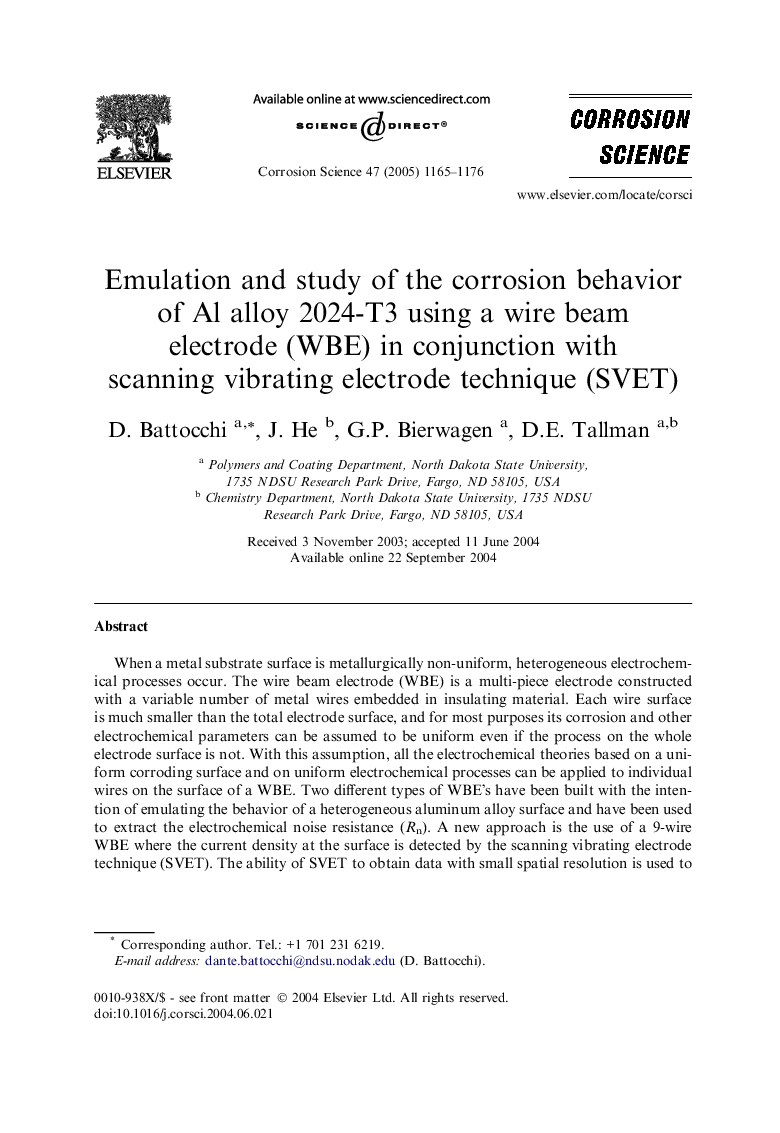| Article ID | Journal | Published Year | Pages | File Type |
|---|---|---|---|---|
| 10628753 | Corrosion Science | 2005 | 12 Pages |
Abstract
When a metal substrate surface is metallurgically non-uniform, heterogeneous electrochemical processes occur. The wire beam electrode (WBE) is a multi-piece electrode constructed with a variable number of metal wires embedded in insulating material. Each wire surface is much smaller than the total electrode surface, and for most purposes its corrosion and other electrochemical parameters can be assumed to be uniform even if the process on the whole electrode surface is not. With this assumption, all the electrochemical theories based on a uniform corroding surface and on uniform electrochemical processes can be applied to individual wires on the surface of a WBE. Two different types of WBE's have been built with the intention of emulating the behavior of a heterogeneous aluminum alloy surface and have been used to extract the electrochemical noise resistance (Rn). A new approach is the use of a 9-wire WBE where the current density at the surface is detected by the scanning vibrating electrode technique (SVET). The ability of SVET to obtain data with small spatial resolution is used to understand if the WBE configuration can simulate the behavior of a plate electrode. From the data obtained thus far, the WBE configuration showed the ability to emulate a continuous surface as the current distributions from the analysis with the SVET has been confirmed.
Related Topics
Physical Sciences and Engineering
Materials Science
Ceramics and Composites
Authors
D. Battocchi, J. He, G.P. Bierwagen, D.E. Tallman,
